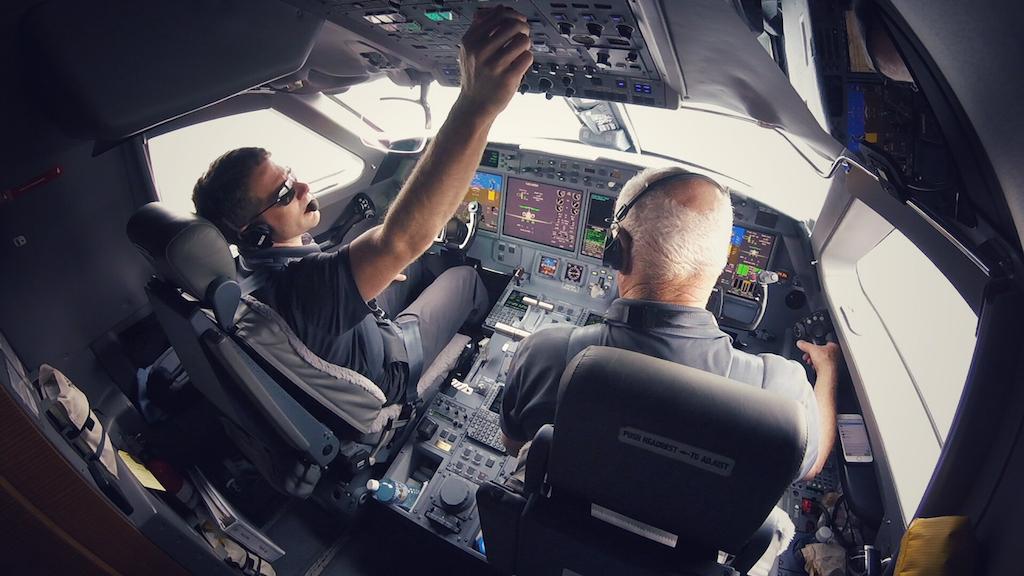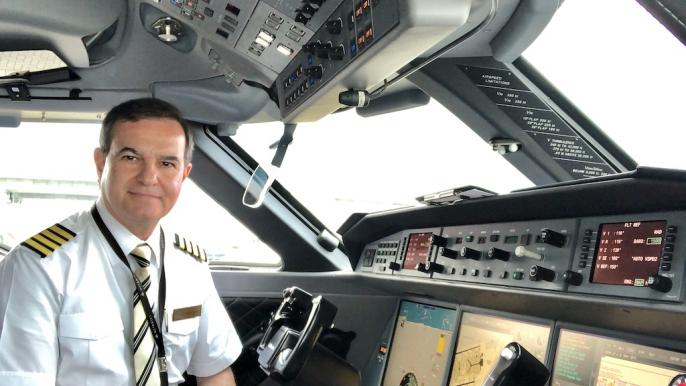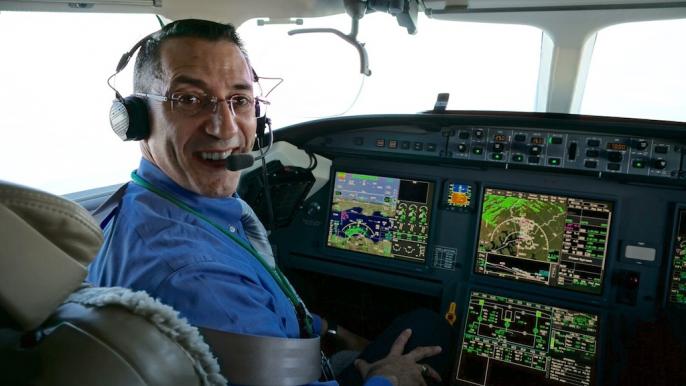
Most of us captains have one thing in common: We think we are good captains and that our crews agree. Nine out of 10 benevolent dictators agree: “My people love me!” When the person in charge asks you for your opinion, your answer is probably preordained. “Yes captain, you are a good captain.”
I once went through an initial type rating course with a retired airline captain who seemed remarkably deaf when it came time to learn how a business jet crew operates. Though I had decades of experience flying Gulfstreams and he had zero, he wasn’t interested in my opinions after he made his decisions. Our instructor would make a comment about his crew resource management (CRM) and he would get upset, saying he always got the highest marks from his airline crews about his CRM. Years later I met someone who flew with him, and his story was different. “He’s kind of a jerk. He was the captain, and I wasn’t. End of story.”
That was a couple of type ratings ago and I rarely give this captain much thought except when I catch myself being “kind of a jerk.” As a U.S. Air Force pilot, I was taught that you must be a jerk now and then when the mission takes precedence over people’s feelings and “you have to expect a few losses in a big operation.” As a civilian pilot, I try to minimize that kind of thing but still worry about it. Military or civilian, I’ve concluded that good aircraft captains have a few things in common: They are good pilots, they understand their job as captain, and they know how to command as leaders. If you fall short in any of these categories, you need to pick up your game if you ever hope to be a good captain. If you have these skills already, you need to work hard to maintain them.
Better Captains Are Better Pilots

The title “captain” confers upon pilots a certain level of respect and authority. There are captains who exist purely on that which comes with their assigned position. They passed the minimum level of testing and earned the minimum level of ratings so that they are “good enough.” This will only take them so far. Better captains must have the earned respect that only comes from a reputation or history of demonstrated competence as pilots. They might be extremely effective leaders and managers, but if they are lousy pilots, they are destined to be lousy captains.
In some of my Air Force squadrons and civilian flight departments we had pilots who were destined to be copilots for life and others who had upgraded to the left seat and had to be paired with very strong captains. These pilots, it was said, were “accidents waiting for a place to happen.” The fact that some of them became captains was an organizational mistake that only serves as lessons for us in the future.
One such captain met his accident at Teterboro Airport (KTEB), New Jersey, on May 15, 2017. This captain of a Learjet 35A (N452DA) had a history of substandard performance during training. He required three additional simulator training sessions to earn his aircraft type rating for a variety of reasons, most notably an inability to fly a circling approach. Reading the cockpit voice recorder (CVR) transcripts of that flight provides a chilling example of a pilot who feared having to fly a particular maneuver and, in the end, died trying to attempt it.
If you have gaps in your abilities or fear certain maneuvers you are trained and authorized to do, you cannot be an effective captain. You need to concentrate on improving your pilot abilities before you can hope to be a better captain. While simulator training is expensive, there are vast online sources that are free. I was once at a friend’s house where a copy of the Aeronautical Information Manual (AIM) was tied to the bathroom door. He said there was more information in the AIM than he could ever know, but he was going to devote any extra reading time to learning it. There is some wisdom in that. If you don’t know the first thing about the circle to land maneuver, for example, the AIM can get you started.
Once you’ve upped your pilot game to “good,” you next need to aim for “better.” The second article in this series, “Being a Better Pilot,” can further your skills with three rules that will keep you out of trouble. There is more to being a pilot than just operating stick and rudder. Just as there is more to being a captain than just wearing the four stripes on an epaulette.
Better Captains Understand Their Job as Captains

Good airlines and world-class flight departments may have established training programs that teach young first officers what they need to know to become good captains beyond the mechanics of flying from the left seat, but unfortunately many organizations assume first officers will just pick up what they need along the way, and, therefore, no formal training program is offered.
With or without a training program, many captains seem to understand almost intuitively what is needed. They do a good job of setting the right tone with the crew, they know how to execute the tasks at hand, they know how to make decisions effectively, and they are good mentors for their crews. They “get it.” Over the years I’ve met a few captains who don’t get it at all and are not aware of what “it” is in the first place. With most of these captains, it is simply a matter of education; they have never been taught. Let’s fix that now.
Set the right tone. This is especially important with large crews but also pays dividends for a crew of just two pilots. My first exposure to a large crew was in an Air Force Boeing 707 where we had two pilots, an engineer, a navigator, a flight attendant, three radio operators and three crew chiefs. We once had a brand-new captain whom I will call Brad. Brad was just a year older than me and was a fellow copilot in the squadron since my arrival a year before. At his first crew meeting before a five-day trip, he introduced himself by name and rank but added, “just call me Brad.” He continued to behave as copilot Brad, unwilling to make decisions and always mindful of his position as everyone’s best friend. In the week to come several crewmembers came to me and asked for my opinion on various matters and went away figuring a decision had been made. The crew chiefs started making their own decisions and the flight engineer became the final arbiter of fuel loading. At the end of the trip nobody was happy, and Brad was left wondering why the trip had gone so poorly.
Things can start off on the wrong foot even with a crew of two. There are more than a few examples in many accident reports, but one that is more blatant than others involved the crew of Corporate Airlines Flight 5966 on Oct. 19, 2004. The pilots descended below the minimum descent altitude (MDA) on a non-precision approach into Kirksville Regional Airport (KIRK), Missouri, killing themselves and 13 of their 15 passengers. This is more than just another “duck under” crash; it is one where the pilots failed to take their roles as aviators seriously. They failed to make required callouts, failed to arrest their descent rate and descended below the MDA without the required visual cues, and failed to go around when alerted to their sink rate by the ground proximity warning system. One of the ironies of the accident was that less than 30 min. before crashing, the captain said, “Too many of these [expletive] take themselves way too serious in this job.”
Execute the mission. A common trait among failed captains is having a long list of ready excuses for why a trip had gone sour, why someone had complained of a “minor” transgression, or why it seems they have been put on an informal “no fly” list by other crewmembers. The answer may be as simple as everyone wants to be part of a winning team; nobody wants to be associated with a loser. Captains who get the job done regularly develop good reputations; those who don’t get reputations of another sort. You can’t become a better captain until you unlock what it takes to get the job done safely without alienating company leadership, your peers and your crews.
Make decisions. A good professional pilot can make well-reasoned decisions after dispassionately weighing the factors, hearing out any opinions and explaining the rationale. A failed pilot will skip all three steps and delegate the decision to someone else, make a snap decision based on a whim, or make no decision at all. For extra credit in the failed pilot category, the pilot can reverse the decision several times. All of these hallmarks, good or bad, are even more critical when it comes to the captain.
How does one become a good decision maker? I find that preparation ahead of the decision is key. You can never know too much and studying everything you can about the airplane and the operation will pay dividends. Then once the decision-making opportunity avails itself, collect the facts, discuss with the crew as time permits, and then make the decision. What a lot of vacillators don’t understand is that every difficult decision made in the past makes future decisions that much easier. It is a skill that builds with experience.
Mentor the crew. A good captain understands the value of developing first officers into good captains and helping all crewmembers achieve their own professional goals. A reputation for mentoring the next generation attracts the next generation, and that feeds the reputation. A better captain also understands that the act of teaching others solidifies the lessons in oneself. We learn better by teaching.
I was once in a flight department of two highly experienced captains and one lesser-experienced first officer. My fellow captain would complain of the first officer’s ineptitude and the first officer would complain about the captain’s unreasonable demands. As the boss, I believed both pilots were to blame, but the captain was more at fault because he failed to set the right tone and mentor our fledgling pilot. He said teaching was not part of his job description. I said it was part of the job for every captain.







Comments
A Navy Captain I was training at FlightSafety who had a excellent crew briefing once remarked; "The bi-product planning is: ADVENTURE"